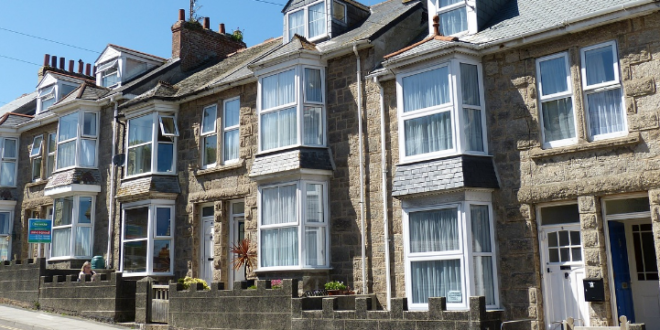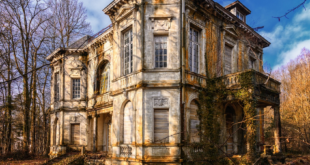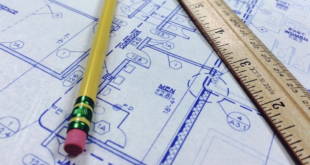The United Kingdom is renowned for its diverse and distinctive architecture, reflecting a rich history and a variety of regional influences. From quaint cottages to modern townhouses, the types of houses found across the UK offer insights into the country’s cultural and historical evolution. Here’s a comprehensive guide to the most common house types in the UK, highlighting their characteristics, historical significance, and regional variations.
Victorian Terraced Houses
Characteristics:
- Architecture: Victorian terraced houses, popular during the reign of Queen Victoria (1837-1901), are often characterized by their ornate façades, high ceilings, and bay windows. They typically feature a long, narrow layout with rooms arranged in a linear fashion.
- Materials: These houses are commonly built with brick and may include decorative elements such as patterned tiles and wrought iron railings.
Historical Significance:
- Urban Expansion: The Victorian terraced house became prevalent during a period of rapid urban expansion and industrialization, providing affordable housing for the growing working-class population.
Georgian Houses
Characteristics:
- Architecture: Georgian houses, built between 1714 and 1830, are known for their symmetry and classical proportions. They often feature sash windows, brick or stone façades, and a central front door with a pediment.
- Interior: These homes typically have spacious, well-proportioned rooms and elegant interiors with high ceilings.
Historical Significance:
- Design Influence: The Georgian period was heavily influenced by classical architecture, and these houses reflect the elegance and simplicity of the Georgian style.
Edwardian Houses
Characteristics:
- Architecture: Edwardian houses, built during the early 20th century (1901-1910), are known for their more relaxed and informal design compared to their Victorian predecessors. They often feature larger windows, simpler ornamentation, and use of new building materials like reinforced concrete.
- Materials: These houses are commonly constructed with brick or rendered plaster and may include arts and crafts influences.
Historical Significance:
- Social Changes: The Edwardian era saw changes in social attitudes, and the architectural style reflects a shift towards more comfortable and family-oriented living spaces.
Cottage
Characteristics:
- Architecture: Cottages are typically small, charming homes that are often found in rural or semi-rural areas. They feature features such as thatched roofs, exposed beams, and stone or brick walls.
- Interior: The interior of a cottage is usually cozy and rustic, with a focus on warmth and simplicity.
Historical Significance:
- Country Living: Cottages were originally built for agricultural workers and artisans, providing functional and modest housing in the countryside.
Bungalows
Characteristics:
- Architecture: Bungalows are single-story homes with a low, horizontal profile. They often have wide verandas, overhanging eaves, and simple, functional designs.
- Materials: Bungalows can be built from various materials, including brick, timber, or concrete.
Historical Significance:
- Early 20th Century: The bungalow became popular in the early 20th century, particularly in suburban areas, offering accessible living for people of all ages.
Modern Townhouses
Characteristics:
- Architecture: Modern townhouses, or contemporary houses, are often characterized by clean lines, large windows, and innovative designs. They are typically multi-story structures with a focus on maximizing space and natural light.
- Materials: Modern townhouses often use materials like glass, steel, and concrete, and may include eco-friendly features such as green roofs and energy-efficient systems.
Historical Significance:
- Urban Development: Modern townhouses have become increasingly popular in urban areas, providing stylish and efficient living spaces in densely populated locations.
Semi-Detached Houses
Characteristics:
- Architecture: Semi-detached houses are pairs of houses that share a common wall. They are typically two-story homes with separate front and back gardens.
- Design: These houses often feature similar architectural styles on either side of the shared wall, providing a sense of symmetry.
Historical Significance:
- Post-War Housing: Semi-detached houses became particularly popular in the mid-20th century as a solution to housing shortages and urban sprawl.
Detached Houses
Characteristics:
- Architecture: Detached houses are standalone structures that do not share walls with any other buildings. They often feature larger gardens and more space compared to other house types.
- Design: The design of detached houses can vary widely, from traditional styles to contemporary designs.
Historical Significance:
- Suburban Expansion: Detached houses are commonly found in suburban areas, reflecting a desire for privacy and spacious living that emerged in the 20th century.
Art Deco Houses
Characteristics:
- Architecture: Art Deco houses, popular in the 1920s and 1930s, are known for their geometric shapes, bold colors, and luxurious materials. They often feature decorative elements such as chevrons, zigzags, and streamlined forms.
- Materials: These houses may include materials like stucco, terracotta, and polished metal.
Historical Significance:
- Design Revolution: The Art Deco movement represented a departure from traditional styles, embracing modernity and opulence in architectural design.
Post-War Houses
Characteristics:
- Architecture: Post-war houses, built in the aftermath of World War II, often feature practical and functional designs. They include a mix of styles, from simple boxy shapes to more modernist influences.
- Materials: These houses were typically constructed with affordable materials and were often designed to be quickly built to address housing shortages.
Historical Significance:
- Rebuilding Efforts: Post-war houses were part of extensive rebuilding efforts to provide homes for returning soldiers and their families.
The variety of house types in the UK reflects the country’s rich architectural heritage and the changing needs and preferences of its residents over time. From the grandeur of Georgian homes to the practicality of post-war houses, each type of dwelling offers a unique glimpse into British history and culture. Understanding these common house types not only provides insights into architectural evolution but also helps in appreciating the diversity and character of British residential design.
 Homeowners Club If you are one of the 15 million homeowners in the UK, the free to join online Homeowners Club is for you.
Homeowners Club If you are one of the 15 million homeowners in the UK, the free to join online Homeowners Club is for you.








